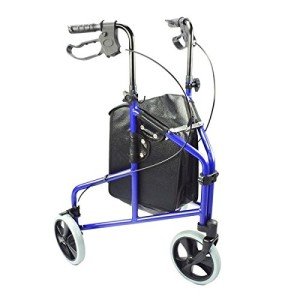
As people age, keeping mobility ends up being vital for protecting self-reliance and quality of life. For numerous seniors, walking aids such as walkers use a valued service to assist them navigate their environment safely and with confidence. This article explores the complex world of senior walkers, including their types, benefits, use, and some frequently asked questions.
Walkers, typically referred to as walking frames, are mobility aids created to offer assistance and balance for individuals who may have problem walking individually. They generally consist of a sturdy frame, grips for holding, and in some cases, wheels for ease of motion. Comprehending the various types of walkers readily available can help seniors and their caregivers make educated decisions.

| Walker Type | Description | Best For |
|---|---|---|
| Standard Walker | A four-legged frame that needs to be raised to move on. | Seniors requiring optimum stability. |
| Two-Wheeled Walker | A walker with 2 wheels on the front for easier mobility. | Those with small balance issues. |
| Four-Wheeled Walker | A walker with four wheels, often consists of a seat and brakes. | Active seniors requiring mobility and pause. |
| Rollator Walker | A kind of four-wheeled walker that is lightweight and foldable. | Seniors who are more active and require slight support. |
| Platform Walker | A specialized walker with a platform for support, typically used in physical treatment. | Individuals needing particular assistance for injuries. |
Senior walkers supply numerous benefits that considerably improve the mobility and independence of elderly people. Here are some of the most notable advantages:
When choosing a walker, numerous aspects ought to be thought about to make sure the best fit. Below are bottom lines seniors or caregivers need to examine:
To make the most of the benefits and decrease dangers associated with walkers, appropriate usage methods are necessary. Here are steps seniors should follow:
The cost of senior walkers can differ based upon functions and materials utilized. Requirement walkers may cost as low as ₤ 30, while sophisticated models with wheels and seats may range from ₤ 50 to ₤ 150.
Indications that a Senior Walker may require a walker can consist of frequent stumbling or losing balance, a recent surgical treatment or injury impacting mobility, and avoiding walking or taking part in social activities.
Yes, walkers can be an important part of physical treatment, assisting seniors restore strength and dexterity through safe motion.
Walkers can be acquired at medical supply stores, pharmacies, or online sellers. Some insurance coverage plans may even cover part of the expense.
Regular upkeep includes inspecting for loose parts, ensuring brakes function properly, and cleaning the frame to prevent rust or wear.
Senior walkers are a vital resource for keeping mobility and independence as one ages. With numerous types of walkers offered, it is important for seniors and caretakers to consider individual requirements, usage, and comfort when selecting an appropriate walking aid. By encouraging safe mobility, walkers not just boost physical capabilities however likewise positively impact social connections and psychological wellbeing.
Through proper use and care, seniors can enjoy an active, engaging lifestyle, bolstered by the assistance of their walker. Understanding the value of mobility aids like walkers is essential in promoting boosted life quality for seniors dealing with mobility challenges.
No Data Found!
